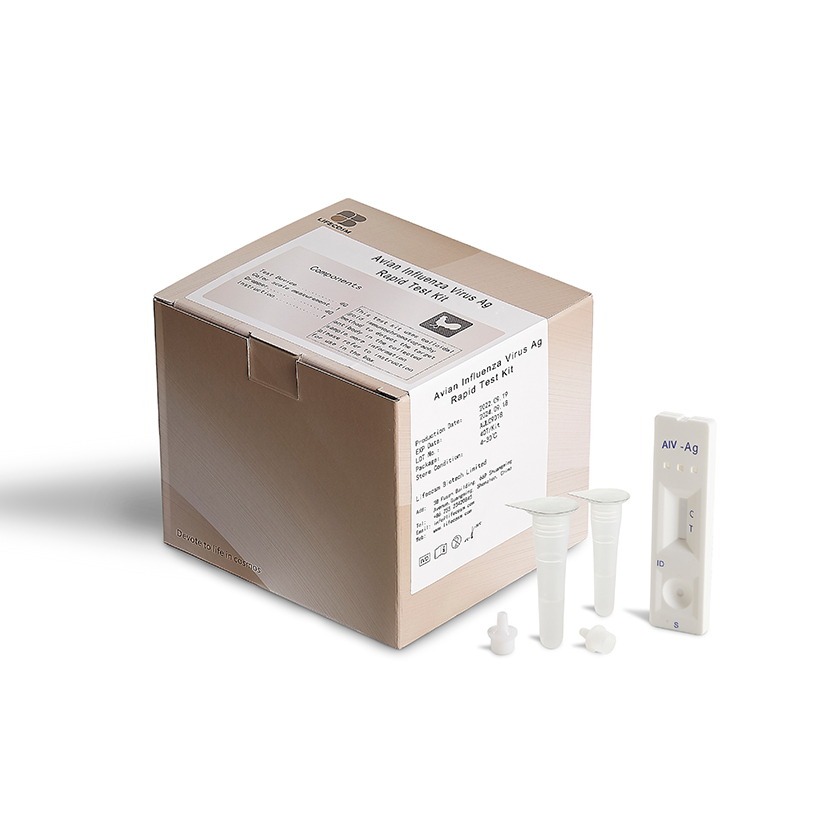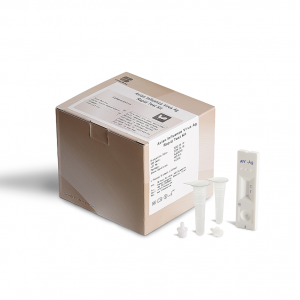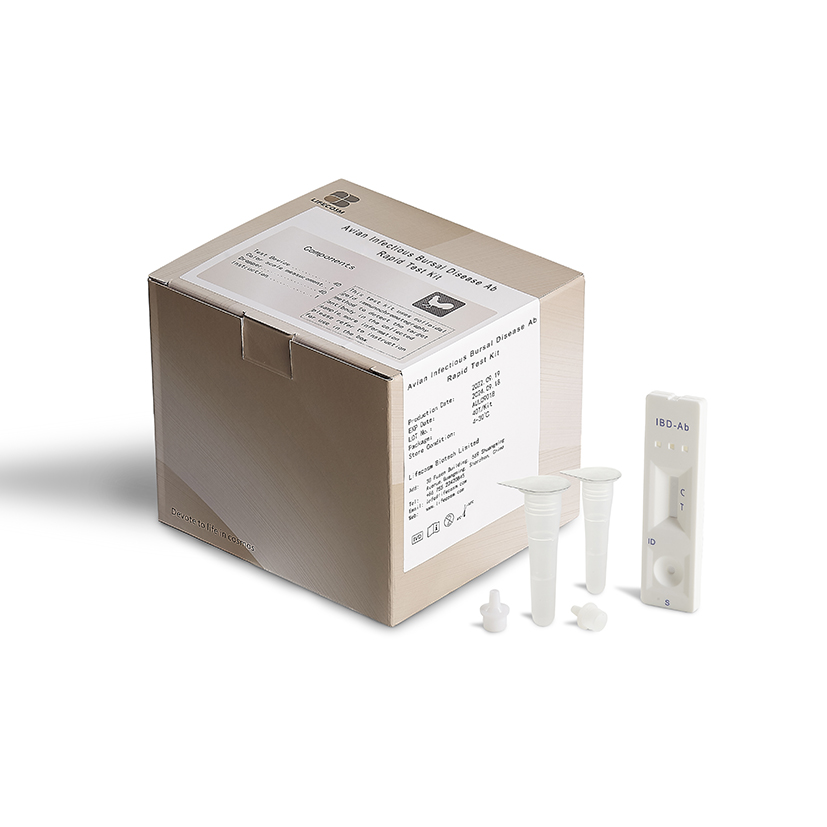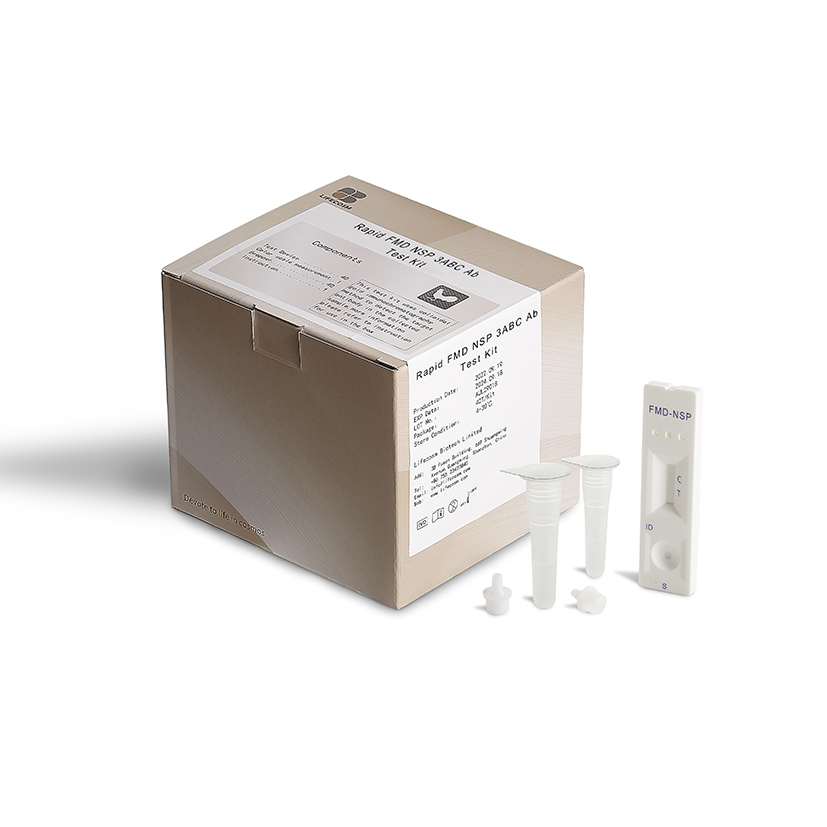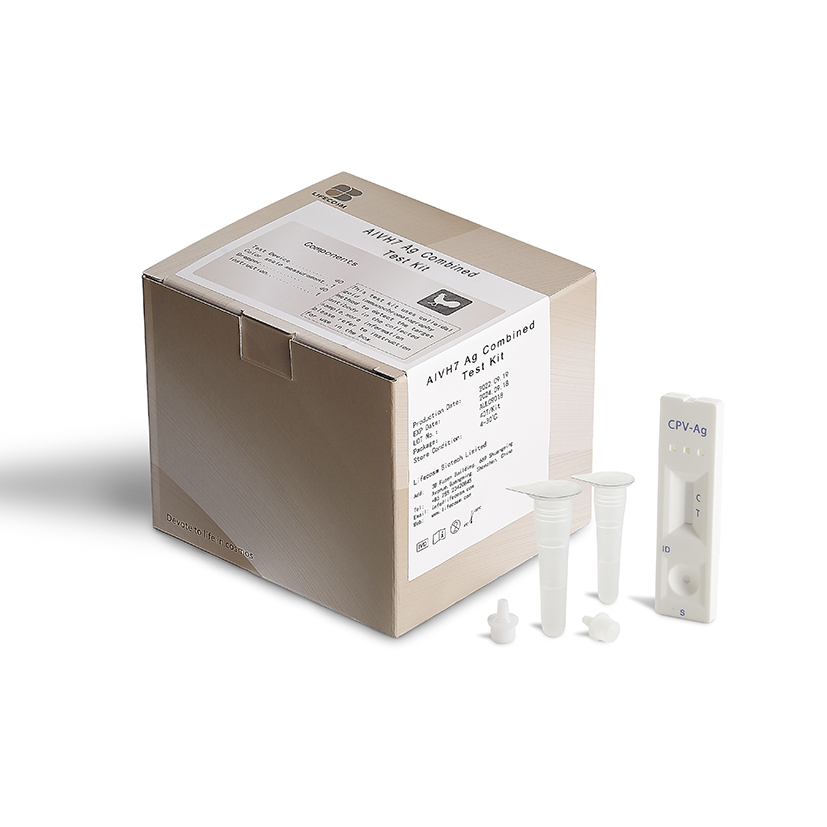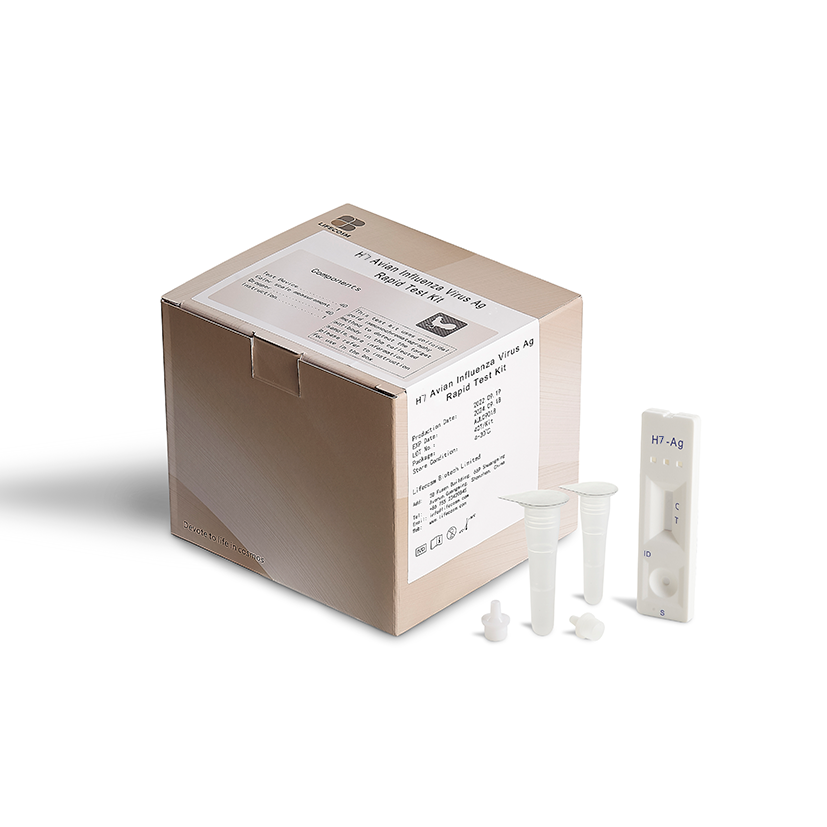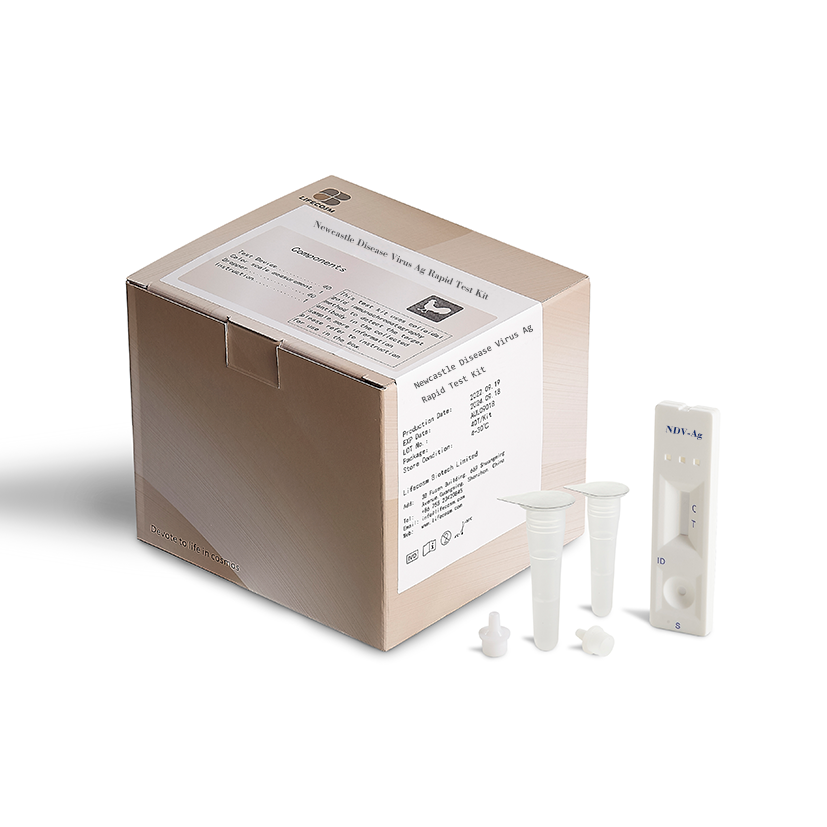
Products
Lifecosm Avian Influenza Virus Ab Rapid Test kit for veterinary diagnostic test
Avian Influenza Virus Ab Rapid Test kit
| Avian Influenza Virus Ab Rapid Test kit | |
| Summary | Detection of specific Antibody of Avian Influenza within 15 minutes |
| Principle | One-step immunochromatographic assay |
| Detection Targets | Avian Influenza Antibody |
| Sample | Serum |
| Reading time | 10~ 15 minutes |
| Quantity | 1 box (kit) = 10 devices (Individual packing) |
| Contents | Test kit, Buffer bottles, Disposable droppers, and Cotton swabs |
| Caution | Use within 10 minutes after opening Use appropriate amount of sample (0.1 ml of a dropper) Use after 15~30 minutes at RT if they are stored under cold circumstances Consider the test results as invalid after 10 minutes |
Information
Avian influenza, known informally as avian flu or bird flu, is a variety of influenza caused by viruses adapted to birds. The type with the greatest risk is highly pathogenic avian influenza (HPAI). Bird flu is similar to swine flu, dog flu, horse flu and human flu as an illness caused by strains of influenza viruses that have adapted to a specific host. Out of the three types of influenza viruses (A, B, and C), influenza A virus is a zoonotic infection with a natural reservoir almost entirely in birds. Avian influenza, for most purposes, refers to the influenza A virus.
Though influenza A is adapted to birds, it can also stably adapt and sustain person-to-person transmission. Recent influenza research into the genes of the Spanish flu virus shows it to have genes adapted from both human and avian strains. Pigs can also be infected with human, avian, and swine influenza viruses, allowing for mixtures of genes (reassortment) to create a new virus, which can cause an antigenic shift to a new influenza A virus subtype which most people have little to no immune protection against.
Avian influenza strains are divided into two types based on their pathogenicity: high pathogenicity (HP) or low pathogenicity (LP). The most well-known HPAI strain, H5N1, was first isolated from a farmed goose in Guangdong Province, China in 1996, and also has low pathogenic strains found in North America.[8][9] Companion birds in captivity are unlikely to contract the virus and there has been no report of a companion bird with avian influenza since 2003. Pigeons can contract avian strains, but rarely become ill and are incapable of transmitting the virus efficiently to humans or other animals.
Symptoms
There are many subtypes of avian influenza viruses, but only some strains of five subtypes have been known to infect humans: H5N1, H7N3, H7N7, H7N9, and H9N2. At least one person, an elderly woman in Jiangxi Province, China, died of pneumonia in December 2013 from the H10N8 strain. She was the first human fatality confirmed to be caused by that strain.
Most human cases of the avian flu are a result of either handling dead infected birds or from contact with infected fluids. It can also be spread through contaminated surfaces and droppings. While most wild birds have only a mild form of the H5N1 strain, once domesticated birds such as chickens or turkeys are infected, H5N1 can potentially become much more deadly because the birds are often in close contact. H5N1 is a large threat in Asia with infected poultry due to low hygiene conditions and close quarters. Although it is easy for humans to contract the infection from birds, human-to-human transmission is more difficult without prolonged contact. However, public health officials are concerned that strains of avian flu may mutate to become easily transmissible between humans.
Spreading of H5N1 from Asia to Europe is much more likely caused by both legal and illegal poultry trades than dispersing through wild bird migrations, being that in recent studies, there were no secondary rises in infection in Asia when wild birds migrate south again from their breeding grounds. Instead, the infection patterns followed transportation such as railroads, roads, and country borders, suggesting poultry trade as being much more likely. While there have been strains of avian flu to exist in the United States, they have been extinguished and have not been known to infect humans.
PreventionExamples of avian influenza A virus strains
|
HA subtype |
NA subtype |
Avian influenza A viruses |
| H1 | N1 | A/duck/Alberta/35/76(H1N1) |
| H1 | N8 | A/duck/Alberta/97/77(H1N8) |
| H2 | N9 | A/duck/Germany/1/72(H2N9) |
| H3 | N8 | A/duck/Ukraine/63(H3N8) |
| H3 | N8 | A/duck/England/62(H3N8) |
| H3 | N2 | A/turkey/England/69(H3N2) |
| H4 | N6 | A/duck/Czechoslovakia/56(H4N6) |
| H4 | N3 | A/duck/Alberta/300/77(H4N3) |
| H5 | N3 | A/tern/South Africa/300/77(H4N3) |
| H5 | N4 | A/Ethiopia/300/77(H6N6) |
| H5 | N6 | H5N6 |
| H5 | N8 | H5N8 |
| H5 | N9 | A/turkey/Ontario/7732/66(H5N9) |
| H5 | N1 | A/chick/Scotland/59(H5N1) |
| H6 | N2 | A/turkey/Massachusetts/3740/65(H6N2) |
| H6 | N8 | A/turkey/Canada/63(H6N8) |
| H6 | N5 | A/shearwater/Australia/72(H6N5) |
| H6 | N1 | A/duck/Germany/1868/68(H6N1) |
| H7 | N7 | A/fowl plague virus/Dutch/27(H7N7) |
| H7 | N1 | A/chick/Brescia/1902(H7N1) |
| H7 | N9 | A/chick/China/2013(H7N9) |
| H7 | N3 | A/turkey/England/639H7N3) |
| H7 | N1 | A/fowl plague virus/Rostock/34(H7N1) |
| H8 | N4 | A/turkey/Ontario/6118/68(H8N4) |
| H9 | N2 | A/turkey/Wisconsin/1/66(H9N2) |
| H9 | N6 | A/duck/Hong Kong/147/77(H9N6) |
| H9 | N7 | A/turkey/Scotland/70(H9N7) |
| H10 | N8 | A/quail/Italy/1117/65(H10N8) |
| H11 | N6 | A/duck/England/56(H11N6) |
| H11 | N9 | A/duck/Memphis/546/74(H11N9) |
| H12 | N5 | A/duck/Alberta/60/76/(H12N5) |
| H13 | N6 | A/gull/Maryland/704/77(H13N6) |
| H14 | N4 | A/duck/Gurjev/263/83(H14N4) |
| H15 | N9 | A/shearwater/Australia/2576/83(H15N9) |

